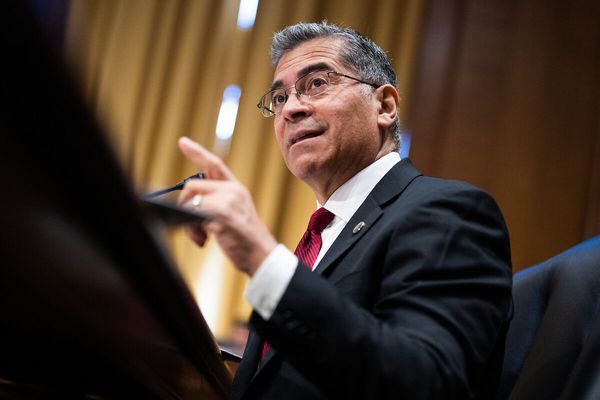
Rain has a nasty habit of curtailing one-day limited overs cricket matches, but it was not until the mid-1990s, thanks to the intervention of the statistician Frank Duckworth, that a watertight formula was found to provide a satisfactory result for weather-affected encounters.
From the 60s onwards, when the shortened form of the game became popular at the top level, the cricketing authorities had experimented with a number of crude ways of deciding the result of a rain-interrupted match.
Although these worked effectively in some circumstances, they were by no means foolproof, and quite often teams that were batting second found themselves being set unfeasible targets to win after a rain break.
This came most dramatically into the public consciousness during the semi-finals of the 1992 World Cup, in which, after rain had briefly stopped play, with South Africa needing a manageable 22 runs to win off 13 balls against England, the players came back to the field to be told that under the system in place they still had 22 runs to score to win, but off just one ball – essentially an impossibility.
Keen to right such injustices, Duckworth, who has died aged 84, had by that time already been working on a complex mathematical formula that would take many more factors into account than just overs and runs, and would place more of an emphasis on the real state of the game when rain had stopped play.
Eventually finding a kindred spirit to help him with the task – a fellow mathematician, Tony Lewis – he tuned and retuned the system until it emerged as the Duckworth-Lewis method and was adopted across the game from 2001 onwards.
Although there have been minor adjustments since, the formula has proved so robust that rain-related run-chase controversies have virtually disappeared from the game. Hardly could a more comprehensive and effective solution have been found to any sporting problem, and its originators became, through its widespread use, household names across the world – even if few people knew exactly who they were.
Duckworth was born in Lytham St Annes in Lancashire, to Eric, who ran a building company, and his wife, Annie. A cricket fan as a child, he enjoyed playing the game at the town’s King Edward VII grammar school, although he never progressed beyond house matches.
A maths prodigy, by the time he had arrived at Liverpool University to study physics in the late 50s he had become an armchair cricketer instead, listening avidly to matches on the radio.
After graduating in the early 60s he stayed on at Liverpool to study for a PhD in metallurgy, sharing a house for a time with John Lennon, as a lodger of Lennon’s aunt Mimi (“not that we had much to do with him, although we heard him plucking his guitar occasionally”). Later he moved on to a flatshare with the future TV presenter Johnny Ball.
Duckworth’s first job was with the Central Electricity Generating Board at Berkeley Nuclear Laboratories in Gloucestershire, where he was responsible for examining radioactive fuel after its service in nuclear reactors. Recruited initially as a metallurgist, within a year he had established himself instead as a statistician, remaining in that role at Berkeley for the rest of his working life.
Statistics also became Duckworth’s hobby: in his spare time in 1971 he carried out an analysis of football league ground attendances, which he shared with the FA, and he joined the Royal Statistical Society (RSS) in 1975. However, it took some years for him to turn his attention to cricket.
In 1988 he heard the cricket commentator Christopher Martin-Jenkins reading out listener suggestions on how to find a way of fairly adjusting matches to account for time lost to rain. Most of the ideas were so mathematically unsound that he determined to set his own more finely tuned mind to the problem.
“I realised that a fair correction needed to take account not just of how many overs were lost, but the state of the match – overs bowled, wickets lost, and when the overs were lost,” he said. “This required a mathematical relationship to be established, giving the number of runs that could be scored from all combinations of overs available and wickets in hand.” After coming up with a formula that could do just that, he wrote a computer program to encapsulate it.
Taking a generous early retirement package from his employer in 1992, the year of the World Cup semi-final debacle, at the age of 53 Duckworth found himself in a position to pay more attention to his project. He phoned up the Test and Country Cricket Board to tell them of his work, and when they showed interest he presented a paper to an RSS conference in Sheffield which he titled Fair Results in Foul Weather.
The following year he received a letter from Lewis, a maths lecturer at the University of the West of England in Bristol, who had heard about his presentation and was interested in taking the idea further. The pair discovered that they lived only a few miles apart in Gloucestershire and shared a love of beer, and so began to meet regularly in the snug of the Pickwick Inn in the village of Lower Wick to thrash out and refine the formula. By October 1995, after many adjustments, they had found the solution: Z(u, w) = Z0(w)[1 − exp{−b(w)u}].
First adopted in 1997 on England’s tour of Zimbabwe, the Duckworth-Lewis Method was so successful that it was officially taken up across the whole of the game four years later, and remains in place to this day. “Our way is not perfect, but it works about 99.5% of the time,” said Duckworth.
Soon after the method’s widespread adoption, Duckworth became a consultant statistician to the International Cricket Council, a position he occupied alongside his longstanding editorship of the RSS’s news magazine. He retired from both jobs in 2014.
In 2009 an Irish pop band called The Duckworth Lewis Method (formed by Neil Hannon of the Divine Comedy and Thomas Walsh of Pugwash) released an album of the same name that featured a series of cricket-themed songs. In 2011 Duckworth and Lewis jointly wrote a book on the method and its origins.
Along with Lewis (who died in 2020), Duckworth was appointed MBE in 2010 for his statistical work, which also included the creation, after the 1986 Chernobyl disaster, of an International Nuclear and Radiological Event Scale, which tries to put the risks related to nuclear power generation into perspective.
He is survived by his wife, Jeannie (nee Shorey), a teacher, and their daughter.
• Frank Carter Duckworth, statistician, born 26 December 1939; died 21 June 2024







